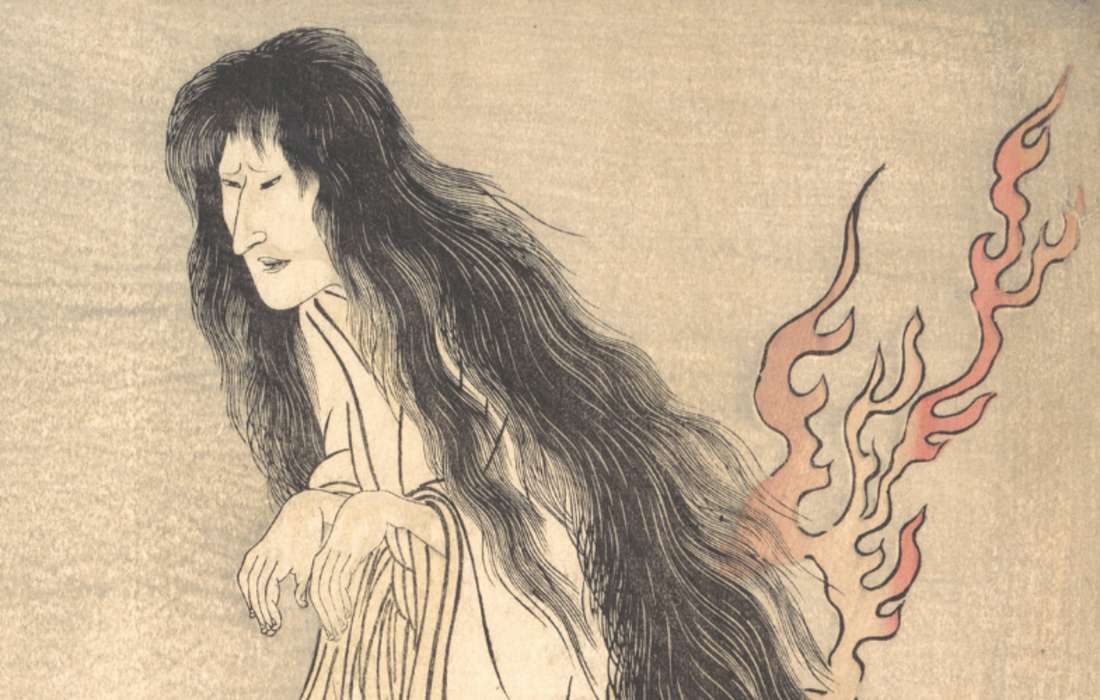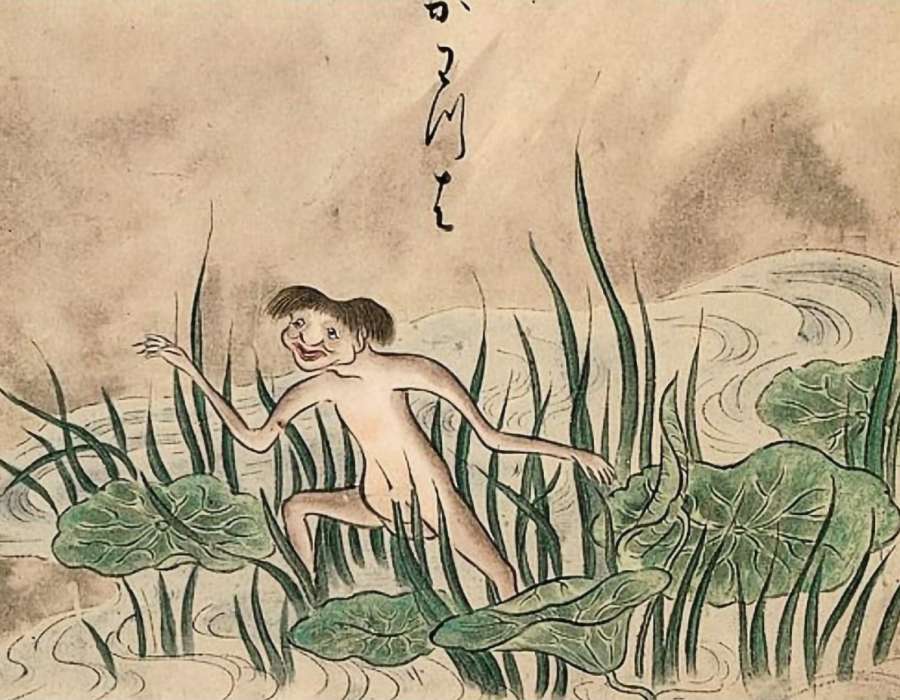When it comes to must-see spots in central Tokyo, few people think of Yotsuya. For the intrepid, the area is home to one of Japan’s most famous ghost stories, the Yotsuya Kaidan.
Despite a rich tradition of ghost stories in Japan, few are internationally known. Most overseas visitors to Japan will only recognize mainstream Hollywood adaptations like The Ring or The Grudge. Meanwhile, the Japanese horror classics from history remain largely undiscovered outside of Japan. And while allusions to such works are often discreetly infused into anime and manga, few fans are aware of the original source material.
Domestically, the picture is very different. For example, the Yotsuya Kaidan is regularly hailed at home as Japan’s finest work in the genre of spooky stories. Originally a kabuki play dating from the Edo period (1603-1868), the Yotsuya Kaidan is a tragic tale of betrayal, murder and revenge.
What is the Yotsuya Kaidan?

Photo credit: Utagawa Toyokuni I, CC0, via Wikimedia Commons
By way of a brief summary, the Yotsuya Kaidan tells the story of a wife by the name of Oiwa who is brutally betrayed by her husband, Iemon. Wanting to get rid of his wife to be with another woman, Iemon and an accomplice lace Oiwa’s facial cream with poison.
The poisoned cream leaves Oiwa horrifically scarred and she dies shortly afterward. In her final moments, Oiwa curses Iemon’s name, and as a revenant of the otherworld goes on to haunt Iemon and ruin his life. Eventually, he flees to an isolated mountain retreat, where he descends into madness and ultimately dies at the hands of his lover’s husband.
If you’re interested in learning more about the Yotsuya Kaidan, consider reading one of the many English-language adaptations. It’s an exemplary work from the world of kabuki!
The scorned wife’s shrine

Unbeknownst to many overseas visitors to Japan, Tokyo’s unassuming area of Yotsuya is rich with all sorts of connections to the Yotsuya Kaidan (and other spooky tales). For example, the quietly eerie Oiwa Inari Shrine pictured above is closely associated with the character of Oiwa. It’s said that the historical figure on which the betrayed wife was based used to come to this spot to pray.
While Oiwa from the Yotsuya Kaidan is supposedly buried at Myogyo-ji temple in nearby Sugamo, Oiwa Inari Shrine in Yotsuya also attempts to placate the tragic Oiwa's wrathful spirit. Technically, the small sanctuary enshrines Inari, the god of agriculture and industry. Locals, however, have long believed that this tiny shrine has strong ties to the forsaken Oiwa.
If you listen carefully enough, just maybe you can hear Oiwa’s vengeful screams as you stroll about the grounds of Yotsuya’s Oiwa Inari Shrine . . .
Sharikimon-dori and Yotsuya’s creepy kappa

Photo credit: Juntaku, Public domain, via Wikimedia Commons

Photo credit: Sawaki Suushi, Public domain, via Wikimedia Commons
Across the street from Yotsuya’s Oiwa Inari Shrine, you’ll find Sharikimon-dori. A former red-light district, the street is demarcated by a pair of red rickshaw drivers (in homage to how patrons used to be dropped off here nightly). While an interesting tidbit of historical trivia, the real point of interest is a small pond that can be found a little further down the street.
What makes this spot so creepy? Well, according to local folklore, the pond used to be infested with kappa, a kind of amphibious demon or imp that preys on those who come too close to bodies of water. In Yotsuya, these nefarious sprites would lure drunken revelers away from the establishments on Sharikimon-dori. Thereafter, the kappa would supposedly pry from their victims their shirikodama, a mythical ball that was said to reside within one’s innards.
While the pond and the small shrine that sits beside it is not much to look at these days, you might still want to be on your guard for the kappa that sneak up on you when you least expect it!
Taiso-ji Temple and the overlords of Hell

Those going as far as Yotsuya’s Oiwa Inari Shrine are also encouraged to walk a little further and check out Taiso-ji temple in neighboring Shinjuku. Here, you’ll find one of Tokyo’s six statues of the Bodhisattva Jizo. Right next to the calming likenesses of Jizo though, you’ll find a temple building that’s home to the two ghastly effigies pictured above.
In the middle of the room is none other than King Enma. Fans of the Dragonball series may already know this tidbit of trivia but in East Asian and Buddhist mythology this stern monarch is believed to judge the dead. When a soul passes on to the next world, King Enma would decide whether it should undergo punishment before being reborn.
The hideous figure on the left of King Enma is also related to the Buddhist underworld. Known as Datsue-ba, this terror sits at the edge of the Sanzu River. Similar to the River Styx from the Greek tradition, all souls must cross to the other side. Standing in their way, however, is Datsue-ba, who disrobes them so she can weigh the garments on a riverside branch. The extent to which the branch bends reflects the gravity of a soul’s sins in life.
If you’re considering a visit to Taiso-ji temple, it’s best to first do the rest of the attractions in Yotsuya. That way, you can end the journey at the major hub of Shinjuku station. Alternatively, although it's a bit of a walk from Yotsuya, the site of the Tokyo 2020 Olympic Games, the New National Stadium is also nearby.
*
Lastly—in efforts to stop the spread of COVID-19, Japan has been employing a mythical spirit called “Amabie” in an advertising campaign using the graphic shown below. Historically, this mermaid or merman-like creature emerged from the sea and either prophesized a bountiful harvest or epidemic. As the world continues to recover from COVID-19, Amabie serves as a positive reminder to stay vigilant!

-
About the author
Author: Donny Kimball
Profile: Donny Kimball is a travel writer and blogger obsessed with exploring the lesser-known side of Japan. He uses his digital marketing skill set to create awareness for hidden gems that would otherwise go unnoticed by overseas visitors to Japan.





















































